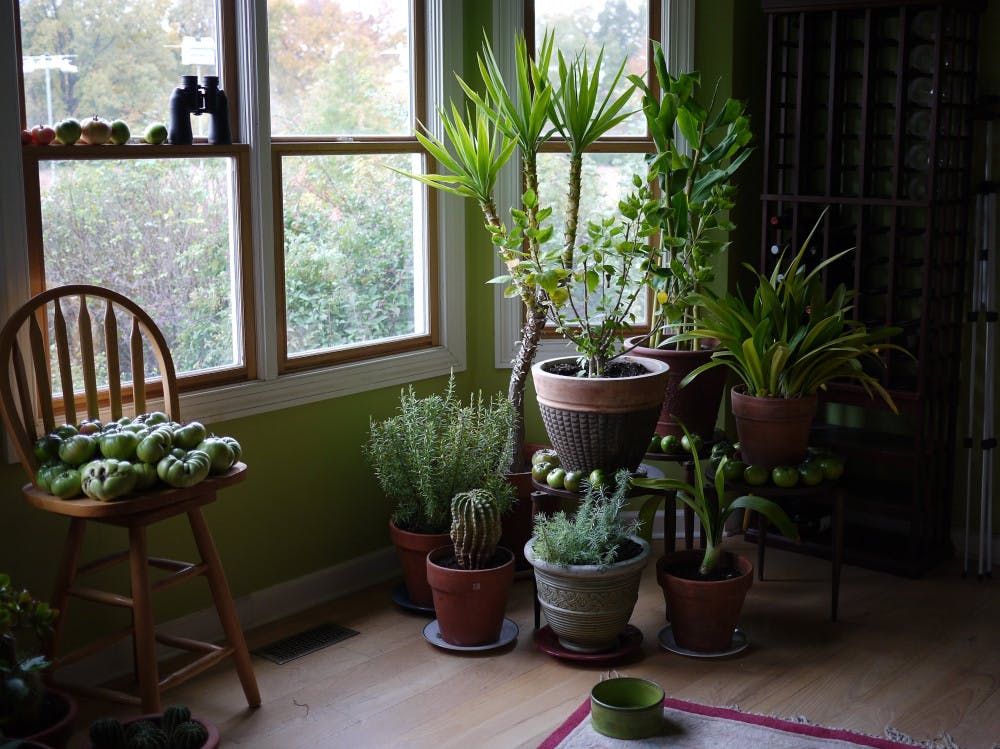 When we have house plants, it is sometimes easy to forget that their maintenance goes beyond a weekly watering. As I consider bringing in my many potted plants from my patio into my house, sheltered away from the chilly nights, there is a lot of end-of-season up keep that needs to be done.
When we have house plants, it is sometimes easy to forget that their maintenance goes beyond a weekly watering. As I consider bringing in my many potted plants from my patio into my house, sheltered away from the chilly nights, there is a lot of end-of-season up keep that needs to be done.
This summer in Oxford has been wet. Many of my herb-going-on-shrub plants, like my poinsettias and false groundcherry, all have grown much larger. Some have even outgrown the pots. There are others that have remained sadly small, likely due to poor drainage, perhaps even catching a bit of root rot.
As we move our plants from outside to inside, we have a prime opportunity evaluate each one before setting them down in our homes.
The first thing to do when bringing plants in is to check for diseases. Included with these diseases are fungi and insects.
If you see brown or white spots that seem to be growing on top of the leaves, it is likely fungus. If you see little crawly bugs that weave webs and look like tiny crabs, you might have mites. If you see small, plump, katydid-like bugs with wings, you have aphids. All of these can be treated if you act quickly, without expensive treatments, and often with things you have at home.
Here is what to do if you see fungus, here are some mite treatments, and here is how to handle aphids. If you see leaves that are bad enough that you want to remove them from the plant, be sure to burn them or otherwise dispose of them so that they don't affect other plants. In other words—never compost diseased leaves!
Another common garden problem you can see on your plants’ leaves is nutrient deficiencies. These you can handle with at-home solutions, such as adding Nitrogen to your pots via sprinkling in your old coffee grounds, but do be aware that your pots are not particularly immune to mold or insects. A more foolproof way to fertilize is to use plant food, or fertilizer—but be sure not to use too much, lest you hurt the plant. Here is a lovely visual guide on what discolored leaves may be telling you, and how to fix it.
Now is also a good time to consider replanting. You may want to switch out the soil—especially if the soil is old, dense, or waterlogged. Plant roots can suffocate if there is not enough air between soil particles, so a very loose, well draining soil is just as important as giving your pants enough air, water, and nutrients.
Finally, there is pruning to consider. Lopsided, leggy (too tall and thin), or simply too large for your tastes plants all can be cut down to size. If it is a branching plant, cut off any branches you want off just above where a leaf ends on the branch, not cutting off the small bud if you can see one. If it is a fern or a plant that sends clones off of its sides, remove the entire clone. This may involve removing the plant from its potting soil to get a clean break. If you want to replant the cut off bits, stick them in a loosely packed pot of potting soil after dipping their tip in some rooting hormone, which you can buy at Wal Mart or any other supermarket with a plant section.
The Great Move Indoors

